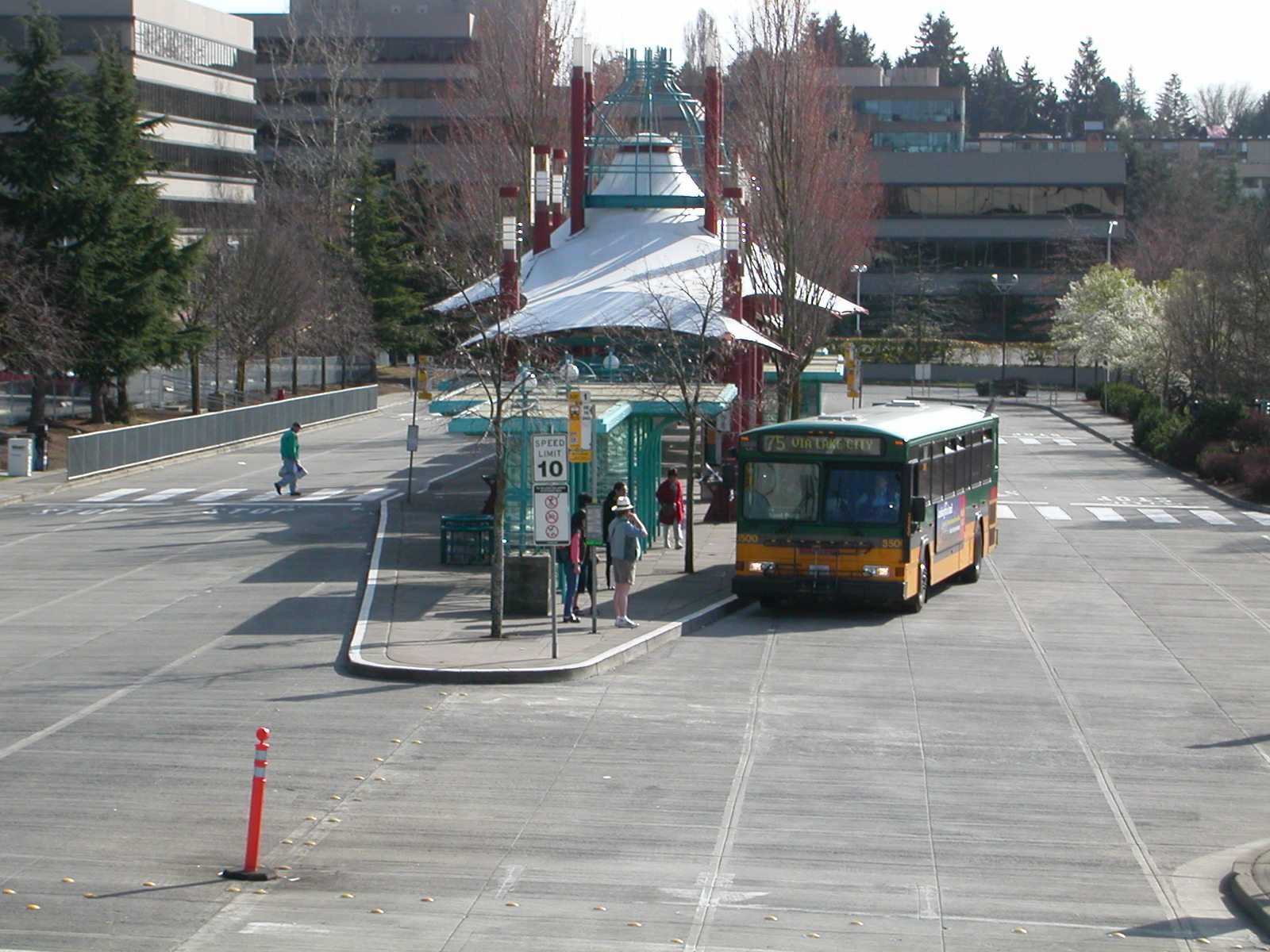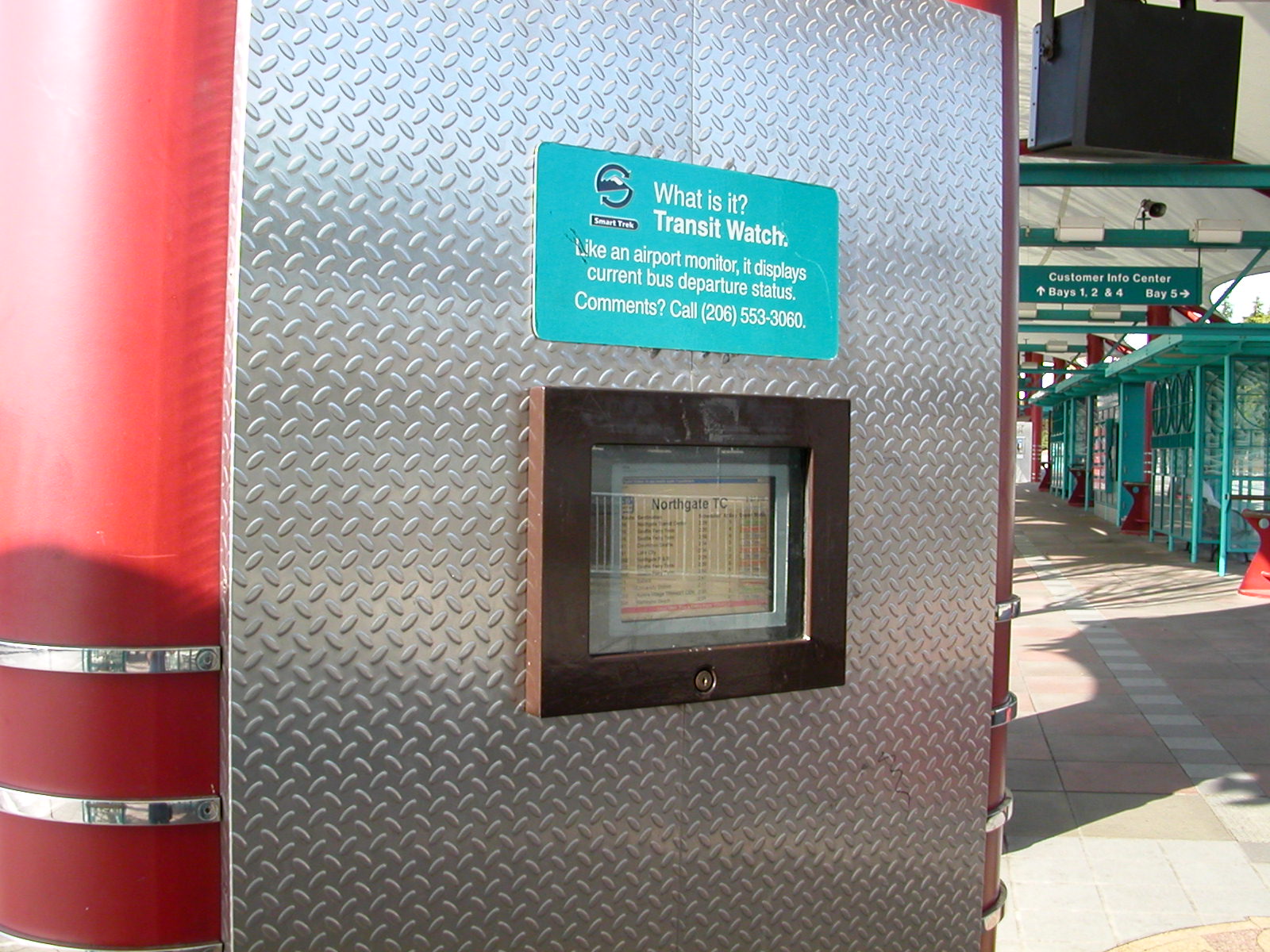NORTHWEST RESEARCHERS MAKE TRACKS WITH INTELLIGENT TRANSPORTATION TECHNOLOGIES

By Stephanie Cartier
It's one of the biggest headaches that most people face, and chances are good that you've been caught in the mess. Traffic is an increasing problem for communities around the Northwest, and it's only expected to get worse.
In the next 30 years, traffic in the Seattle area is expected to grow by 60 percent. More cars on the road means people could lose more time, burn expensive gasoline, and spew more pollutants into the air while sitting in traffic. But Northwest researchers are leading the way in making your trip from point A to point B a lot easier. And their work is becoming increasingly visible.
Intelligent transportation research may eventually help commuters have a safer and more efficient trip. Researchers in the field envision an array of technologies for the purpose. Drivers may take advantage of roadside cameras, color-coded maps, and broadcasts about specific travel routes, for example. Bus riders may check to see if the bus is running on time by dialing up the information on their cell phone, PDA, or computer. People with disabilities can travel more freely as airports and bus systems strive for accessibility, thanks to some high-tech research.
While not all of these things are a part of everyday life yet, transportation engineers hope to make a difference by saving time, aggravation, and lives.
Intelligent transportation designs were first considered in the early 1970s by the Federal Highway Administration in Washington, D.C., but never made it past the planning stages. In 1986, the state of California was looking for a way to increase the capacity of the state freeway network. Soon after, a large-scale national research project was underway to implement a smarter way to travel.
"California wanted to double or triple the capacities of freeways by having cars operate automatically in platoons where the cars would be three feet apart,” says Scott Rutherford, professor of civil and environmental engineering at the University of Washington. "After a while, the concept of the automated car was dumped due to technical and legal reasons, but other things have advanced.”
The idea of having cars travel on moving platforms may sound outlandish, but this preliminary work with intelligent transportation helped lead to some very practical components. Rutherford says while the platoons were the primary mission of intelligent transportation systems (ITS), other components were getting a start. Some of those included traveler information, collision warning and avoidance, and traffic control. "Computers would link everything and improve many aspects of transportation,” he says.
 |  |
"Now you see cars advertised with automated maps, radar brakes so you can't crash into the car in front of you, back up warning so you don't run over your daughter, lane warnings and the ability to talk to your car to find out locations of motels or services,” says Rutherford. He uses an example of telling a car computer system that you'd like a hotel room with a water bed; the computer responds by giving exact directions to the nearest hotel and confirming that it has made a reservation for you already. It may sound like something the cartoon family The Jetsons would use, but Rutherford and others agree, the technology is possible. It's just a matter of getting it out to the public.
"Probably the biggest obstacle is implementation of research results. Often times, it takes years to implement results due to the nature of the research and funding limitations,” says Doug Brodin, manager of the research office for the Washington State Department of Transportation. "The research office (RO) cannot force implementation and there are usually costs associated with implementation that neither the RO nor the program offices are funded to meet. As a result, good research results may be gradually implemented over a period of years subject to the state budget process and funding by the legislature.” He points out that much of the technology is costly, and those dollars must compete with maintaining the roadways and other improvement projects. "In Washington, we have done a good job with federal earmarks for ITS projects over the years, but the needs are great and the dollars are limited.”
Despite the dollar crunch, researchers are continuing to work to make travel easier. The ITS Research Program on the University of Washington campus is one of the nation's leaders in intelligent transportation development. Founded in the early 1990s, the program has been working to achieve the goal of "using technology and optimization to help people travel smarter,” says principal investigator Dan Dailey. Researchers there develop technology which they work to make available to the public. "Most of our projects end up with some kind of display, usually on the web these days, that shows the utility of whatever underlying technology we've developed.”
One project developed by the ITS Research Program has had a dramatic effect on the way people in Seattle navigate. ITS researchers participated in Smart Trek, which helped drivers see traffic conditions to effectively plan their routes. ITS-UW also saves bus riders time: riders can use their computers, PDAs, and cell phones to check the expected arrival time of buses. The website has been popular in the Seattle area; Dailey estimates it gets about four million uses every month.
For travel information to be available to commuters on the move, researchers must improve wireless access throughout the area. Currently, traffic reports are delivered to handheld devices by cell phone towers, but if there were a continuous wireless network in place, drivers could navigate without overloading the towers. "How you make the infrastructure intelligent is obviously through communications,” says Sumit Roy, an electrical engineering professor at UW. Roy would like to implement a continuous wireless network so drivers could access traffic conditions and route information. Using such technology, vehicles could even be equipped with a warning system that could sense an oncoming car at a dangerous intersection. Some of Roy's work is funded by the Ford Motor Company, which might develop cars capable of using the wireless network in the future. "One of the key things to make this work is to have vehicles which are smarter. Intelligent infrastructure is predicated on intelligent vehicles and so the intelligence comes from these vehicles being able to communicate and report to the infrastructure,” says Roy.
Building such an infrastructure takes a lot of teamwork. Researchers in Washington are able to work collaboratively through the Washington State Transportation Center, also called TRAC. TRAC links the government, university researchers, and the private sector. Director of TRAC-UW, Mark Hallenbeck says, "WSDOT staff may come to us with concepts, and the UW folks figure out the details to design, build and test those concepts.”
According to Hallenbeck, the greatest challenge isn't building and testing, it's making travelers aware of the information they need. "Just about anyone can fly into Heathrow airport outside of London, catch the Tube to downtown, and use the subway system to get to the tourist or work place destination of their choice. I bet one in 50 could not do that by bus, even though bus lines exist to make those trips. The reason is that it is hard to find out where the bus lines are, where they go, when they run,” he says. "Information services are key to helping people choose to use modes other than their car.”
Policy makers are embracing the idea of helping people travel smarter. The Puget Sound Regional Council (PSRC) serves as a forum for transportation and growth policy makers in four counties. "ITS has the potential to significantly improve system capacity, safety, and efficiency through congestion management, increased reliability, and convenient transportation connections,” says Associate Transportation Planner Stephanie Rossi.
 |  |
Analysts say the region is far behind in needed improvements and estimate the backlog comes to about $30 billion. Researchers are trying to find innovative ways to fund projects and improve traffic flow. PSRC members are looking to their Traffic Choices study for a possible solution. In the next few months, researchers will observe subjects who have the option of buying into a faster lane or paying to be on the road during heavy traffic times. It is still in the research stages, and principal planner Matthew Kitchen says the tolls are just a future possibility. "What we're trying to do is essentially measure the time-tradeoff,” he says. "They'll see that tolls vary by time on the website, and they'll plan their routes in response to the toll information.”
Intelligent transportation development is also taking place in Idaho, at the National Institute for Advanced Transportation Technology (NIATT), where researchers are coming up with ways to improve the highway infrastructure and develop cars that reduce the impact on the environment. Recently, FHA awarded the NIATT a grant of more than $700,000 to research and develop educational materials for improved traffic signal system operation. Coordinators of the work say that many traffic lights are not timed properly, which is more than just a source of frustration for commuters. A poorly designed traffic light can cause increased congestion, fuel consumption, and increase the likelihood of accidents.
Oregon State University also joins the list of institutions paving the way for intelligent transportation. But the work done there does more than eliminate headaches for travelers; it opens doors that have long been shut for people with disabilities. According to Katherine Hunter-Zaworski, director of the National Center for Accessible Transportation, their work is opening the world to people with disabilities.
"One challenge, it doesn't matter what you're doing, is inconsistency,” Hunter-Zaworski says. She likens every move for a trip to links on a chain; if even one link is broken, if the sidewalks don't allow a wheelchair to navigate to the bus stop, the trip is inaccessible. Making sure all links are intact, and making people aware that those links are intact, is the goal of NCAT. Hunter-Zaworski says some people do not travel, not because the trip is inaccessible, but because they are not aware that travel is possible. "They're fearful, they don't want to make a scene.” So NCAT is working to find out what the misperceptions are and taking steps to correct them. "We're really trying to bring down those barriers, whether real or perceived.”
NCAT is working with major airline companies to develop ways travelers with disabilities can safely and comfortably travel. Air travel can be a logistical nightmare for wheelchair users; NCAT is working to make airplane bathrooms more accessible on cross-country flights.
Researchers at NCAT are using biomechanics to determine how and when injuries occur to people with disabilities and airline staff; motion capture techniques are used to record movement and stresses to effectively design ways to transfer people safely in and out of an airplane seat. Hunter-Zaworski says that while it's cost-prohibitive to retrofit existing planes, companies have given her a warm reception, and you might see these improvements in place in future commercial planes. And with an aging population, this work will likely prove to be beneficial to more and more people. "Any improvement we make really benefits all travelers,” says Hunter-Zaworski.
So whether you're in the air, on a bus, or in your own car, you'll probably notice more changes coming your way in the next few years.
Stephanie Cartier is pursuing a master's degree in technical communication at the University of Washington.
Images:
Top: Traffic throughout the Northwest is expected to become even heavier in the coming years, and researchers are turning to new technologies to alleviate the congestion.
Middle: Researchers say that promoting intelligent design would encourage more people to take the bus.
Bottom: New technologies are facilitating travel in the Northwest.
Photos: Stephanie Cartier 
|